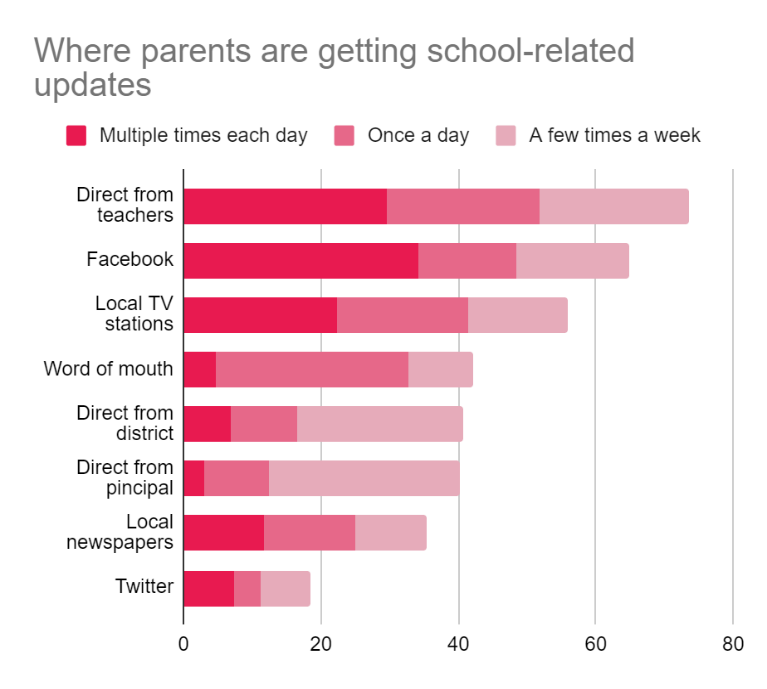New survey data: Reaching parents amid school closures
With schools around the country closed for weeks and months to come, America's education system will only be as effective as educators' ability to reach families. To understand how that communication is going so far, the Charles and Lynn Schusterman Family Foundation asked us to partner with Change Research to survey parents and analyze how to reach them most effectively. We used those results to put together communications recommendations for schools.
Here are a few of the key takeaways:
How information travels best: Email and platforms like ClassDojo swamp all other ways of accessing information, including robocalls, texts, and school websites; to reach those without connections, respondents favored hard-copy paper resources.
Information sources: Families are looking to teachers most of all as their sources for information about school, with many communicating with teachers multiple times each day. Yet Facebook and local television hold untapped potential for educators to reach school families. Most parents are turning to Facebook and television multiple times a week as sources for school-related news.
Satisfaction and worry: Parents are generally satisfied with school and district communications to date, but voiced hunger for simple, streamlined messages. They’re also deeply worried about the future and crave more information about expectations for remote learning, grades, promotions, and re-opening.
The digital divide: Our poll reinforced others about how lack of access to broadband and devices threatens to upend plans for distance learning. About half of parents say they know families without reliable internet. In interviews, school system leaders repeatedly cited families' inability to pay internet or smartphone service bills as a major hurdle to keeping students connected and said the big telecommunications companies should be doing more to ensure access for all families during this crisis. They said they were increasingly losing touch with families as phones are cut off for non-payment — even as our poll found that 40 percent of lower-income respondents had lost their jobs due to the pandemic.
To learn more, check out our poll summary, communications recommendations for schools, or the full toolkit.

